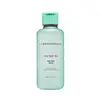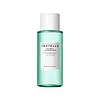What's inside
What's inside
 Key Ingredients
Key Ingredients

 Benefits
Benefits

 Concerns
Concerns

 Ingredients Side-by-side
Ingredients Side-by-side

Melaleuca Alternifolia Leaf Extract
PerfumingDipropylene Glycol
HumectantCentella Asiatica Extract
CleansingButylene Glycol
HumectantMelaleuca Alternifolia Flower/Leaf/Stem Extract
Skin ConditioningBetaine
HumectantPanthenol
Skin ConditioningSodium Citrate
BufferingCitric Acid
BufferingMelaleuca Alternifolia Leaf Oil
AntioxidantBetaine Salicylate
AntimicrobialXanthan Gum
EmulsifyingWater
Skin ConditioningEthylhexylglycerin
Skin ConditioningPentylene Glycol
Skin ConditioningOctyldodeceth-16
EmulsifyingCholeth-24
EmulsifyingMelaleuca Alternifolia Leaf Water
Antimicrobial1,2-Hexanediol
Skin ConditioningTocopherol
AntioxidantMelaleuca Alternifolia Leaf Extract, Dipropylene Glycol, Centella Asiatica Extract, Butylene Glycol, Melaleuca Alternifolia Flower/Leaf/Stem Extract, Betaine, Panthenol, Sodium Citrate, Citric Acid, Melaleuca Alternifolia Leaf Oil, Betaine Salicylate, Xanthan Gum, Water, Ethylhexylglycerin, Pentylene Glycol, Octyldodeceth-16, Choleth-24, Melaleuca Alternifolia Leaf Water, 1,2-Hexanediol, Tocopherol
Water
Skin ConditioningChamaecyparis Obtusa Water
MaskingMelaleuca Alternifolia Leaf Water
AntimicrobialButylene Glycol
HumectantCentella Asiatica Extract
CleansingPropanediol
SolventPinus Palustris Leaf Extract
TonicMethyl Gluceth-20
Humectant1,2-Hexanediol
Skin ConditioningHydroxyacetophenone
AntioxidantCarbomer
Emulsion StabilisingPolyglyceryl-10 Laurate
Skin ConditioningTromethamine
BufferingPentylene Glycol
Skin ConditioningEthylhexylglycerin
Skin ConditioningCaprylyl Glycol
EmollientCitric Acid
BufferingDisodium EDTA
Melaleuca Alternifolia Leaf Oil
AntioxidantSodium Citrate
BufferingSalicylic Acid
MaskingCastanea Crenata Shell Extract
Skin ConditioningLavandula Angustifolia Flower Extract
CleansingWater, Chamaecyparis Obtusa Water, Melaleuca Alternifolia Leaf Water, Butylene Glycol, Centella Asiatica Extract, Propanediol, Pinus Palustris Leaf Extract, Methyl Gluceth-20, 1,2-Hexanediol, Hydroxyacetophenone, Carbomer, Polyglyceryl-10 Laurate, Tromethamine, Pentylene Glycol, Ethylhexylglycerin, Caprylyl Glycol, Citric Acid, Disodium EDTA, Melaleuca Alternifolia Leaf Oil, Sodium Citrate, Salicylic Acid, Castanea Crenata Shell Extract, Lavandula Angustifolia Flower Extract
 Reviews
Reviews

Ingredients Explained
These ingredients are found in both products.
Ingredients higher up in an ingredient list are typically present in a larger amount.
1,2-Hexanediol is a synthetic liquid and another multi-functional powerhouse.
It is a:
- Humectant, drawing moisture into the skin
- Emollient, helping to soften skin
- Solvent, dispersing and stabilizing formulas
- Preservative booster, enhancing the antimicrobial activity of other preservatives
Butylene Glycol (or BG) is used within cosmetic products for a few different reasons:
Overall, Butylene Glycol is a safe and well-rounded ingredient that works well with other ingredients.
Though this ingredient works well with most skin types, some people with sensitive skin may experience a reaction such as allergic rashes, closed comedones, or itchiness.
Learn more about Butylene GlycolCentella Asiatica Extract (Centella) is derived from an herb native to Southeast Asia. It is famous for its anti-inflammatory and soothing properties.
Centella is rich in antioxidants and amino acids, such as Madecassic Acid and Asiaticoside.
Studies show the compounds in centella help with:
The combination of all these properties makes centella effective at soothing, hydrating, and protecting the skin.
Other great components of centella include Vitamin A, vitamin C, several B vitamins, and Asiatic Acid.
Fun fact: Centella has been used as a medicine and in food for many centuries. As a medicine, it is used to treat burns, scratches, and wounds.
Learn more about Centella Asiatica ExtractCitric Acid is an alpha hydroxy acid (AHA) naturally found in citrus fruits like oranges, lemons, and limes.
Like other AHAs, citric acid can exfoliate skin by breaking down the bonds that hold dead skin cells together. This helps reveal smoother and brighter skin underneath.
However, this exfoliating effect only happens at high concentrations (20%) which can be hard to find in cosmetic products.
Due to this, citric acid is usually included in small amounts as a pH adjuster. This helps keep products slightly more acidic and compatible with skin's natural pH.
In skincare formulas, citric acid can:
While it can provide some skin benefits, research shows lactic acid and glycolic acid are generally more effective and less irritating exfoliants.
Most citric acid used in skincare today is made by fermenting sugars (usually from molasses). This synthetic version is identical to the natural citrus form but easier to stabilize and use in formulations.
Read more about some other popular AHA's here:
Learn more about Citric AcidEthylhexylglycerin (we can't pronounce this either) is commonly used as a preservative and skin softener. It is derived from glyceryl.
You might see Ethylhexylglycerin often paired with other preservatives such as phenoxyethanol. Ethylhexylglycerin has been found to increase the effectiveness of these other preservatives.
This tea tree oil comes from the leaves of the Tea Tree plant. Tea tree oil has antioxidant, anti-inflammatory, and antimicrobial properties.
According to the book Journal of Profiles of Drug Substances, tea tree helps in reducing acne-causing bacteria such as Propionibacterium acnes. This is due to the Terpinen components of tea tree oil.
Tea tree may cause sensitivity and irritation for some people. This oil naturally contains fragrance such as linalool and limonene.
However, research shows irritation usually occurs when using pure tea tree oil and not in cosmetic products.
Tea tree oil was found to help relieve the symptoms of psoriasis in one study.
Tea tree oil is toxic when ingested. Another study showed it to caused damage to the nervous system of dogs and cats when applied to their skin or given orally.
Learn more about Melaleuca Alternifolia Leaf OilThis ingredient is created by distilling parts of the tea tree plant. The bark and leaves of the tea tree plant are rich in Terpinen, an antioxidant, antibacterial, and anti-inflammatory ingredient.
Tea tree may cause sensitivity and irritation for some people due to its linalool and limonene content.
Learn more about tea tree benefits here.
Learn more about Melaleuca Alternifolia Leaf WaterPentylene glycol is typically used within a product to thicken it. It also adds a smooth, soft, and moisturizing feel to the product. It is naturally found in plants such as sugar beets.
The hydrophilic trait of Pentylene Glycol makes it a humectant. As a humectant, Pentylene Glycol helps draw moisture from the air to your skin. This can help keep your skin hydrated.
This property also makes Pentylene Glycol a great texture enhancer. It can also help thicken or stabilize a product.
Pentylene Glycol also acts as a mild preservative and helps to keep a product microbe-free.
Some people may experience mild eye and skin irritation from Pentylene Glycol. We always recommend speaking with a professional about using this ingredient in your routine.
Pentylene Glycol has a low molecular weight and is part of the 1,2-glycol family.
Learn more about Pentylene GlycolSodium Citrate is the sodium salts of citric acid. In skincare, it is used to alter pH levels and acts as a preservative.
Its main functions are to maintain the pH of a product and neutralize metal ions.
The acidity of our skin is maintained by our glands and skin biome; normal pH level of skin is slightly acidic (~4.75-5.5).
Being slightly acidic allows our skin to create an "acid mantle". This acid mantle is a thin barrier that protects our skin from bacteria and contaminants.
Learn more about Sodium CitrateWater. It's the most common cosmetic ingredient of all. You'll usually see it at the top of ingredient lists, meaning that it makes up the largest part of the product.
So why is it so popular? Water most often acts as a solvent - this means that it helps dissolve other ingredients into the formulation.
You'll also recognize water as that liquid we all need to stay alive. If you see this, drink a glass of water. Stay hydrated!
Learn more about Water